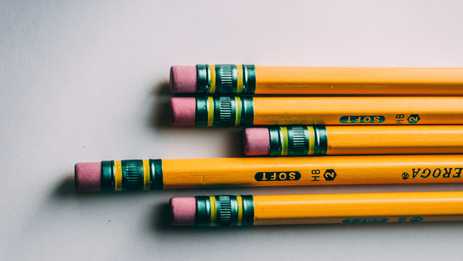As an editor, it’s your duty to educate yourself on potential unconscious biases that might occur in a piece of writing so you can help the author address them.
Courtney Moran, a senior research analyst for HR technologies, defines unconscious bias in this way:
Unconscious biases, otherwise known as implicit biases, are inherent or learned stereotypes about people that everyone forms without realizing it. Unconscious biases are social stereotypes about an individual, group or institution. Everyone has unconscious biases about various groups, and they are often not aligned with one’s conscious values.
We all have unconscious biases. I have them. You have them. Readers have them.
But just because they’re unconscious, it doesn’t mean we can’t do anything about them.
Uncovering unconscious biases
Before we can address unconscious biases, we first need to uncover them.
Here are a few ways you can do this for yourself:
- Try to be more mindful of decisions and judgements you would normally make on autopilot.
- Read books about experiences different from yours and by people different from you to widen your worldview.
- Follow people online who are active voices in their areas of representation to develop your understanding.
- Listen when someone else calls you out on a bias you might be exhibiting – don’t react with offense and dismissal.
- Take the online tests developed by Harvard University for Project Implicit.
What’s interesting is that unconscious biases don’t usually align with our values.
For instance, you might fully believe that Black authors can write novels as equally brilliant as white authors. And yet, perhaps you scan your bookshelf and discover you own hardly any novels by Black authors.
Clearly there’s some unconscious bias at work there, but once aware of it, you can consciously address it.
What kinds of unconscious biases occur in fiction?
Here are just a few story-level examples:
- All astronauts, company bosses, military leaders, technicians, etc. are male, and female characters fulfil the roles of secretaries and lovers.
- The female love interest dies as motivation for the male protagonist.
- There is only one person of colour or one female in an otherwise all-male, all-white group of friends.
- The villain has a disfigurement (often a facial scar) – see: every James Bond villain.
- The villain is coded with queer stereotypes – see: most Disney villains.
- The villain is Russian/German/Chinese/British (the super-posh kind) or a mass of nameless, faceless Middle Eastern men.
- The villain is overweight, and this is often used to create a sense of disgust.
- The villain is a villain because they are suffering from mental illness.
- A white character rescues a group or society of non-white characters from unfortunate circumstances (the ‘white saviour’ narrative).
- The confident, violence-prone male character who mocks emotion is seen as favourable to the quiet, thoughtful, emotionally intelligent male character.
- The main role of a character with a disability is to help the character without a disability learn something about themselves.
- A character over fifty is baffled by smartphones, computers or the internet.
Hopefully you can see how each of these instances can be problematic and demonstrate unconscious negative stereotypes and biases.
Here are a few word-level issues to look out for:
- Look for words like ‘only’, ‘need’, ‘always’ and ‘just’ that form generalisations and stereotypes that don’t serve as part of a larger critique of an issue, e.g. ‘She was just a woman’ and ‘Chinese students were always good at maths’.
- Consider the style preferences of the people being referenced. For instance, many people of colour prefer ‘Black’ to be capitalised when a piece of writing refers to people/culture.
- Think people-first, e.g. the phrase ‘disabled people’ and not ‘the disabled’ should generally be used as the collective term because ‘disabled’ is a description, not a group of people.
- Look for adjectives that are used to describe only one group of people. (These often carry negative connotations, too.) For example: the ‘ditzy’ woman, the ‘sassy’ Black woman, the ‘dirty’ old man, the ‘little’ old lady.
- Look for verbs that carry unintended negative weight. For instance, you ‘commit’ a crime and you ‘commit’ a sin, but the phrase ‘committed suicide’ should really be rethought because suicide is neither a crime nor a sin – ‘died by suicide’ is one alternative.
If you want to learn more about how to address these kinds of language-based biases, take a look at the APA Style Bias-Free Language guide and the Conscious Style Guide – both free online recourses.
Your responsibility as an editor
First and foremost, don’t judge people for having unconscious biases – because it’s really not the same as being deliberate prejudice.
If you’re conducting a developmental edit, you’re in a better position to guide an author to reconsider any of the story-level unconscious biases that you might see in the manuscript.
If you’re conducting a line and copy-edit, it can be more difficult to address story-based unconscious biases. Sure, it would be simple enough to make a few of the all-female secretaries male, but it would be a much bigger task to change a story based on the ‘white savour’ narrative.
I recommend you don’t just go ahead and change all the word-level instances of unconscious bias you spot in a manuscript, because that’s not your call.
Your job is to flag up the instances you spot and explain why they could be problematic. This way, the author can make the final decision about their piece of writing with a fuller understanding of the implications of their words.
In the end, we all have unconscious biases. But both writers and editors have a responsibility to try to uncover them in themselves and the writing they’re putting out into the world.





